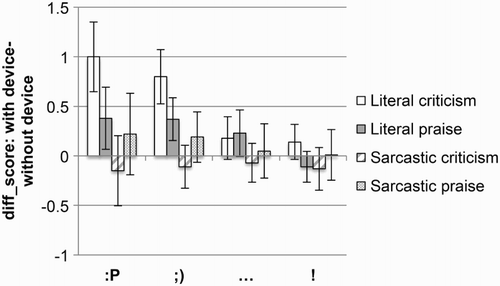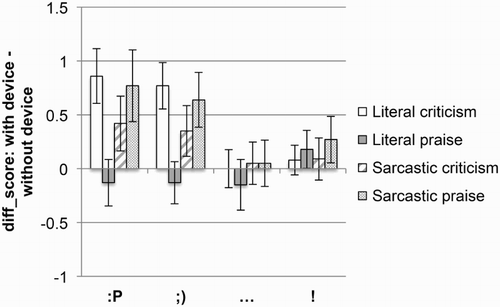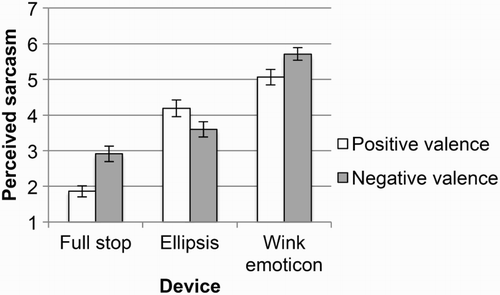Figures & data
Table 1. Example material in all experimental conditions in Experiment 1
Table 2. Best fitting models and fixed-effects parameters in Experiment 1
Figure 1 Difference sarcasm rating scores for literal and sarcastic praise and criticism, for each device. Error bars represent 95% CI (confidence interval).

Figure 2 Difference emotional rating scores for literal and sarcastic praise and criticism, for each device. Error bars represent 95% CI (confidence interval).

Figure 3 Mean perceived emotional impact of literal and sarcastic comments of both valences, in the presence of a device (top panel), and in the absence of a device (bottom panel). Error bars represent 95% CI (confidence interval).

Table 3. Example material in all experimental conditions in Experiment 2
Table 4. Best fitting models and fixed-effects parameters in Experiment 2
Figure 5 Mean perceived emotional impact. The rating scale has been converted so that 0 represents the middle rating of 4, while positive scale numbers represent ratings from 5 to 7, and negative numbers represent ratings from 1 to 3. Error bars represent 95% CI (confidence interval).

Table 5. Overview of results from Experiments 1 and 2
Figure 6 Mean perceived emotional impact of literal and sarcastic comments of both valences. The rating scale has been converted so that 0 represents the middle rating of 4, while positive scale numbers represent ratings from 5 to 7, and negative numbers represent ratings from 1 to 3. Error bars represent 95% CI (confidence interval).


